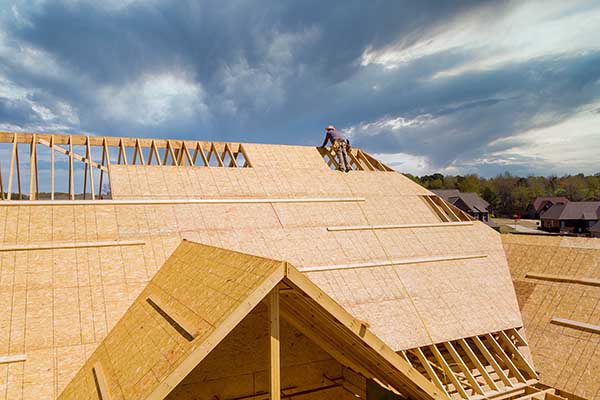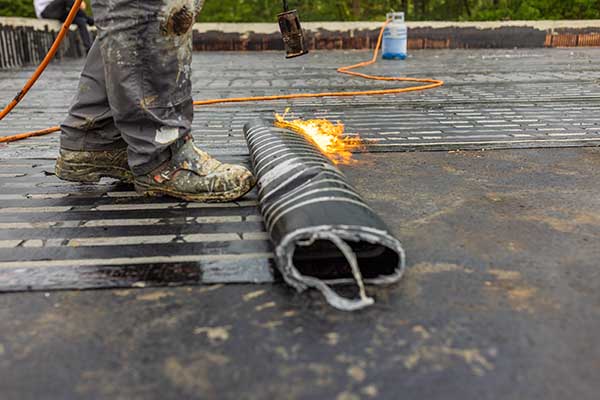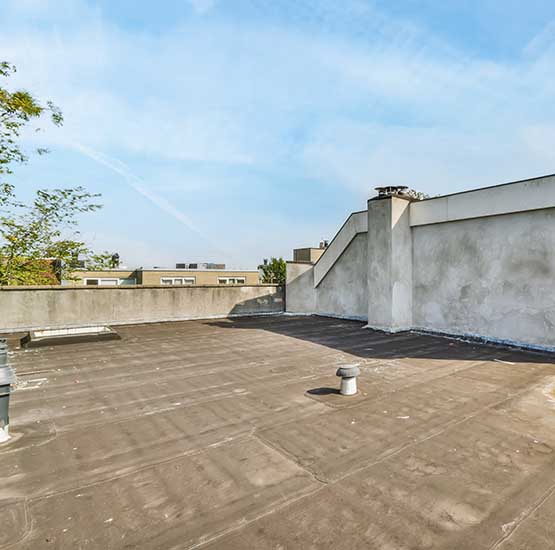Can You Repair a Commercial Roof Without Disrupting Business? Yes—Here’s How
Wright's Roofing & Construction, Inc.
Locally Owned • Free Estimates • 24/7 Emergency Service
Free Estimates
Commercial Roof Repair Without Disruption
For commercial property owners and facility managers, scheduling roof repairs often feels like an impossible balancing act. On one hand, you need to address leaks, damage, or wear quickly to protect your building. On the other, you’re worried about interrupting daily operations, disturbing tenants or customers, or violating noise ordinances. Fortunately, with the right planning, materials, and contractor, you can repair commercial roofing with minimal disruption to business.
In this blog, we’ll show you exactly how to manage a commercial roof repair project that keeps your business running smoothly. From working around operating hours to using low-noise equipment and planning efficient phases, we’ll outline smart, proven strategies to protect both your building and your bottom line.
Why Roof Repairs Can Be Disruptive—And Why They Don’t Have to Be
Commercial roof repairs can be noisy, messy, and logistically complicated. In retail settings, customers may be distracted by loud equipment. In office buildings, employees may lose productivity due to vibrations or blocked access points. And in healthcare or hospitality environments, any disruption could impact health, safety, or service quality.
Common concerns include:
- Excessive noise and vibrations
- Limited access to entrances, exits, or parking areas
- Falling debris or visible mess
- Odors from adhesives or coatings
- Safety risks during active repairs
Despite these challenges, roof repairs are not a one-size-fits-all project. The right approach and a thoughtful contractor can adapt the process to your business’s unique needs.
Step 1: Choose a Contractor Experienced in Occupied Building Repairs
The first and most important step in minimizing disruption is selecting a roofing company that has experience working on occupied commercial buildings. Not all roofers have the training, equipment, or processes in place to handle repairs in active business environments.
What to Look For:
- Proven track record with hospitals, retail centers, warehouses, or offices
- Willingness to schedule work around your business hours
- Ability to phase work over time instead of all at once
- Commitment to clean worksites and safety compliance
- Use of low-VOC and low-noise materials when available
Ask for references, case studies, or past flat roofing projects that demonstrate their success in occupied-space jobs.

Wrights Roofing & Construction, Inc.
Provided me with what I needed to cover my roof when it started leaking in multiple areas till I can get it fixed. They where there for me when no one else was. I recommend them 100% they great people who have a heart.
-Shaina B.
Step 2: Schedule Repairs Strategically
A successful repair plan starts with smart timing. Roofers can work during off-peak hours, on weekends, or in evening windows to avoid interfering with business operations.
Tips for Flexible Scheduling:
- Retail Properties: Schedule work before or after store hours.
- Office Buildings: Aim for early mornings, evenings, or weekends.
- Industrial Sites: Coordinate around production downtimes.
- Healthcare or Senior Living: Work in small phases, with extra precautions to control noise and debris.
If your building operates 24/7, consider having repairs done in alternating sections to avoid closing off critical areas all at once.
Step 3: Use Low-Impact Repair Methods and Materials
Not all repairs require invasive or loud techniques. Depending on the roof type and extent of damage, your contractor can often use low-impact repair methods that minimize disruption.
Examples of Low-Impact Repairs:
- Silicone or Acrylic Coatings: These can be rolled or sprayed on with minimal odor and little to no noise.
- Membrane Overlays: In some cases, instead of removing the existing roof, a new membrane can be installed over the top—cutting down on noise and dust.
- Cold-Applied Adhesives: These avoid the smells and safety issues associated with hot tar or open flame methods.
- Single-Section Repairs: Focused repairs in targeted areas can often be completed without affecting the rest of the building.
Your contractor should walk you through the most non-intrusive options available for your commercial roofing system.
Step 4: Create a Detailed Repair Plan with Clear Phasing
Breaking the project into phases is one of the best ways to reduce disruption. Instead of doing the entire roof at once, your contractor can segment the work by:
- Building sections or zones
- Tenant units or lease areas
- Roofing systems (e.g., skylights, HVAC curbs, drains)
This phased approach allows you to isolate activity and ensure that tenants or staff always have access to at least part of the property.
A good phased plan includes:
- Daily work schedules by zone
- Traffic flow adjustments (both pedestrian and vehicle)
- Access planning for deliveries or maintenance
- Temporary signage or barriers to guide occupants
Your contractor should provide maps, timelines, and updates as the commercial roof repair project progresses.
Step 5: Communicate Early and Often with Tenants and Staff
Open communication is one of the most important elements in a smooth flat roof repair project. Even if disruptions are minimal, people appreciate knowing what to expect.
Best Practices for Communication:
- Notify tenants or departments well in advance
- Send out a repair timeline, including when work will occur in their area
- Explain safety protocols (e.g., warning signs, access restrictions)
- Assign a liaison from your team to address questions or concerns
- Provide updates if timelines shift due to weather or material delivery
This step not only reduces complaints but also builds goodwill and trust between building management and occupants.
Step 6: Prioritize Cleanliness and Safety
Clean, safe jobsites are critical when working in an active commercial property. Your contractor should take extra steps to:
- Clean up debris daily
- Use tarps and catch-all systems to prevent falling materials
- Block off walkways or entrances when needed
- Post visible safety signage and directional guides
- Ensure compliance with OSHA standards
Bonus: Choose a roofer with a strong safety record. Fewer accidents mean fewer liability concerns and faster project completion.
Step 7: Plan for the Unexpected
Even the best-laid plans need flexibility. Weather delays, change orders, or material availability can shift timelines. Anticipate these possibilities with:
- Buffer time built into your project schedule
- A point-of-contact system for real-time communication
- Contingency plans in case an area of the building becomes temporarily inaccessible
A proactive contractor will guide you through adjustments while keeping your business’s needs front and center.
Step 8: Consider Repairs as a Business Investment, Not a Burden
It’s understandable to hesitate on roof repairs out of fear they’ll disrupt business—but putting off necessary repairs often leads to:
- Bigger leaks and more extensive damage
- Higher energy bills from compromised insulation
- Emergency repair costs that are more expensive and harder to manage around operations
Proactively repairing your roof ensures your building stays protected, efficient, and attractive to tenants or customers.
Think of it this way: a well-planned roof repair is less disruptive than a roof failure.
Step 9: Coordinate With Other Building Services
One of the best ways to ensure a smooth commercial roof repair process is to align the repair schedule with other building services. This kind of coordination avoids conflicts, maximizes efficiency, and ensures minimal disruption to daily operations.
Examples of Smart Coordination:
- HVAC Maintenance: If HVAC units are mounted on the roof, schedule repairs or filter changes while the flat roofing crew is already up there. This can reduce access needs and consolidate downtime.
- Window Washing: Avoid overlap that might limit access to the roof or risk safety violations. Reschedule services that might interfere with the roofing zone.
- Pest Control or Landscaping: Let vendors know about repair dates in advance to avoid work being done around safety barriers or construction materials.
- Janitorial Services: If interior leaks have occurred, cleaning teams may need to coordinate post-repair cleanup efforts once the work is complete.
Why This Matters:
Collaborating across vendors keeps your operations seamless and ensures that everyone—from service providers to tenants—is on the same page. It also shows your attention to detail, which builds trust with everyone in the building.
Step 10: Follow Up After the Repairs Are Complete
Just because the last crew truck has pulled away doesn’t mean the job is finished. Post-repair follow-up is essential to ensure the work is holding up, tenants are satisfied, and all systems are functioning properly.
What to Do After Repairs Are Complete:
- Conduct a Final Walkthrough: Have your contractor walk the site with you to confirm that all work has been completed to scope and cleaned up properly.
- Verify Access Points and Pathways Are Clear: Ensure all public areas and entrances are restored to their original condition.
- Distribute a Completion Notice: Let tenants or internal departments know that work is complete and normal operations have resumed.
- Request Maintenance Recommendations: Ask your contractor for a post-repair care plan, including inspection intervals or suggested preventative upkeep.
Bonus Tip:
Document lessons learned during the process—what worked, what could be improved—and apply them to future maintenance planning. This insight will make the next project even smoother.
Tips for Smooth, Business-Friendly Repairs
- Offer Advance Notices: A week before, and then again 24 hours before, remind tenants or departments of work starting.
- Stagger High-Impact Activities: If loud work is necessary, break it into short time windows during least disruptive periods.
- Protect Interior Assets: Cover sensitive equipment or inventory areas that may be vulnerable to vibrations or dust.
- Document Everything: Keep a record of communications, photos of repairs, and warranty information for future reference.
Roof Repairs Don’t Have to Halt Your Business
The idea that commercial roof repairs automatically lead to chaos is outdated. Today’s materials, tools, and planning strategies allow experienced roofing contractors to complete repairs safely, efficiently, and—most importantly—with minimal interference to daily operations.
By choosing the right partner and taking a proactive, collaborative approach, you can keep your building watertight and your business thriving—all at the same time.
Ready to Schedule a Repair Without the Headache?
At Wright’s Roofing & Construction, Inc., we specialize in repairing commercial roofing with your business in mind. Whether you operate a bustling shopping center or a busy office complex, we know how to work around your schedule and minimize disruption while delivering durable, high-quality results.
Let’s plan a repair that fits your business. Contact us today for a free consultation and let us show you how stress-free commercial roof repair can be.
Wright's Roofing & Construction, Inc.
Locally Owned
Licensed, Bonded, Insured
Extended Warranties*
24/7 Emergency Service
Free Estimates
Klamath Falls, OR Top Roofing Contractor




